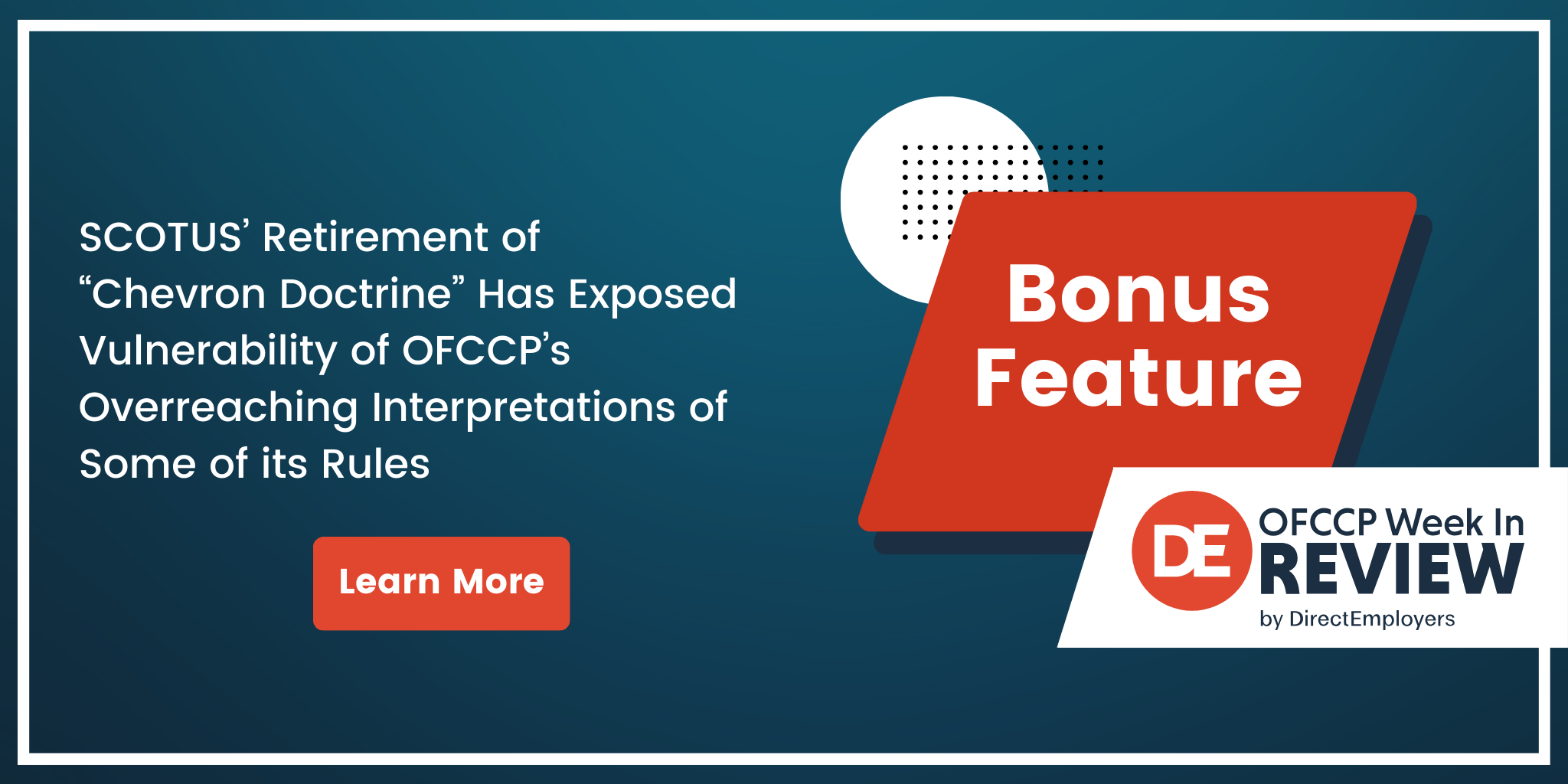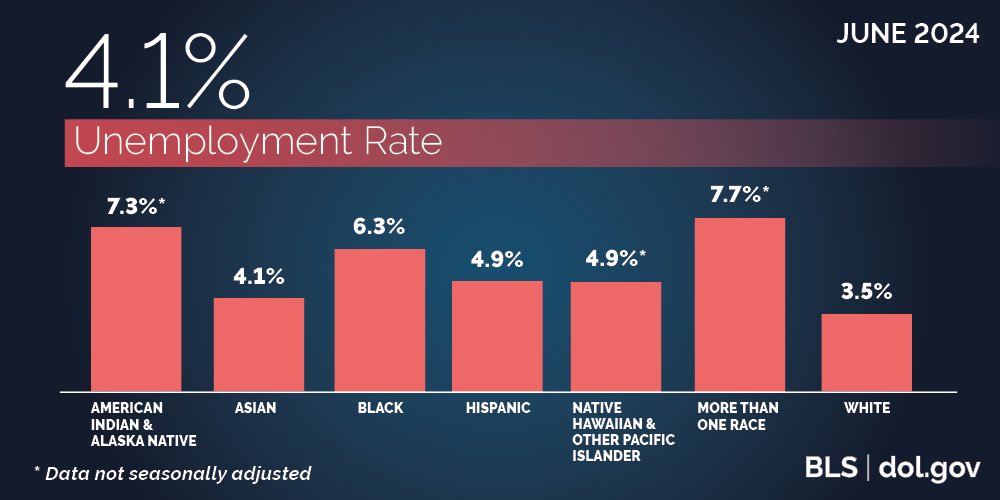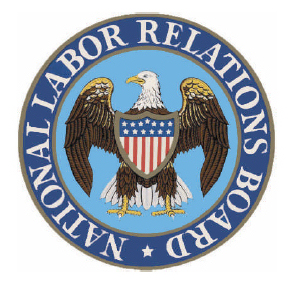
- SCOTUS’ Retirement of “Chevron Doctrine” Has Exposed Vulnerability of OFCCP’s Overreaching Interpretations of Some of its Rules
- With Exception for the Texas State Government, USDOL Overtime Rule Took Effect
- OSHA Unveiled Proposed Rule on First-Ever National Heat Standard
- JOLTS Report – Job Openings Increased by 221k in May, Rate Increased Slightly to 4.9%: State & Federal Government Employers Led Job Openings
- U.S. Economy Added 206k Jobs in June, Unemployment Rate Edged Up to 4.1%
- Spring 2024 Regulatory Agenda Revealed EEOC’s Plan to Propose Employer Pay Data Collection in January 2025
- In Brief
- Looking Ahead: Upcoming Date Reminders
Monday, July 1, 2024: SCOTUS’ Retirement of “Chevron Doctrine” Has Exposed Vulnerability of OFCCP’s Overreaching Interpretations of Some of its Rules

Our three takeaways from Loper Bright are:
1. Now that SCOTUS has returned to Congress its power to rule (as the first Branch of the federal government) and to not allow the Executive Branch of the federal government to either dilute or amplify Congress’ intent, it is now incumbent upon Congress to:
- stop squabbling;
- achieve greater legislative consensus on policy issues, and
- draft much clearer and crisp statutes not filled with ambiguous words forced by policy disagreements (or occasionally by lackadaisical or last-minute time-challenged drafting windows); and
2. The federal Executive Branch agencies are going to have to realize they do not get to make federal policy. Stop right there. That’s it. They do not make policy, rather they implement policy Congress has laid down and delegated to them to implement. This fundamental realization of role and duty now calls for a massive program of re-education among federal employees, especially senior federal managers (who are currently decrying that the sky is falling). For 40 years – during the lifetimes of most current active-duty federal managers – they have thought the Chevron Doctrine gave them the right to “make policy” since nobody could stop them. When the federal courts abdicated their oversight responsibility 40 years ago to review federal agency Rules except where the agency interpretation was “plainly wrong,” it slowly dawned on senior managers in the federal Executive Branch of government that the prison guards had left the prison yard. The inmates (to carry on the analogy) were then on their own to do right or wrong, at their will, and decide what they thought Congress meant or should have meant…because they suddenly could.
Now, senior government managers are going to have to wind it back and realize and internalize that their assigned role in the panoply of the federal government is to follow, not lead. The role of federal agencies under our Constitution is to read, understand, and implement, faithfully, the will of Congress. The federal Executive Branch’s role is not to embroider on the work Congress has begun or to shrink it below the intent of the statute Congress passed and the President signed into law. Rather, senior federal managers need to re-dedicate themselves to only implement the will and intent of Congress as to the statutes Congress has entrusted to and delegated to them to enforce through implementing Rules and responsive programs closely tracking the Congressional intent (for better or worse); and
3. The federal agencies are going to also have to immediately start the hard work of pulling back their many overreaching interpretations that have piled up over the last 40 years. Hopefully, the agencies will do that voluntarily before stakeholders undermine an agency’s credibility by forcing sober reflection and trimming of their overreaching interpretations through lawsuits adjusting the agency’s understanding of the true mission Congress originally assigned them.
What’s on the OFCCP “Shopping List” of Interpretations it Needs to Immediately Withdraw: A Short “Starter Kit”
ISSUE # 1: OFCCP’s quiet about-face as to 52 years of consistent regulatory and audit enforcement interpreting 41 CFR Section 60-4 to require now suddenly:
- Construction contractors that also sign a Supply and Service contract…
Monday, July 1, 2024: With Exception for the Texas State Government, USDOL Overtime Rule Took Effect
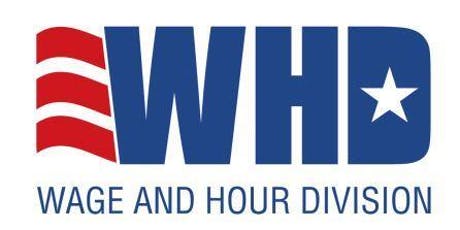
Preliminary Injunction
On June 28, U.S. District Judge Sean D. Jordan of the Eastern District of Texas (Plano) issued a preliminary injunction barring the WHD’s Overtime Rule from taking effect as to the state government of Texas. Although Texas sought a nationwide injunction, the court limited the relief to Texas as an employer. The case is State Of Texas v. U.S. Department of Labor (No. 4:24-cv-00499).
Notably, Judge Jordan explicitly stated in his decision that he was following the Supreme Court’s “controlling guidance” from the High Court’s decision in Loper Bright Enterprises v. Raimondo (“Loper Bright”), which the Supreme Court had issued earlier that same day. (Our story on Loper Bright is here.) Applying Loper Bright, the judge concluded that the State of Texas is likely to succeed in proving the rule exceeds the USDOL’s authority under the Administrative Procedure Act because the Fair Labor Standard Act’s executive, administrative, or professional (“EAP”) exemption is based on employees’ salary and not their job duties.
Our most recent, previous story on the multiple lawsuits challenging the Overtime Rule is here.
Biden Administration Statements
Meanwhile, both the White House and the Department of Labor each issued statements touting the new Rule’s implementation and the extensive number of employees it will cover.
Tuesday, July 2, 2024: OSHA Unveiled Proposed Rule on First-Ever National Heat Standard
Rule Would Require Employers to Develop Heat Hazard Prevention Plan
OSHA Anticipates Public Hearing Following End of Written Public Comment Period
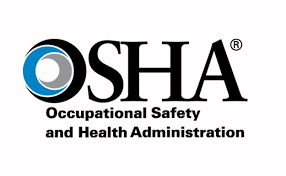
One wonders what the holdup was to release the Proposed Rule since it has been in the making for over three years and much of the Southern United States has been suffering near record-breaking temperatures for the past several months (due to a lingering high atmospheric pressure system known as a “Bermuda High”). Moreover, the summer of 2023 was the hottest summer on record in the United States for the last 2,000 years.
If implemented, the proposal would require employers to identify heat hazards, develop site-specific heat illness and emergency response plans, provide training to employees and supervisors, and implement work practice standards – including rest breaks, access to shade and water, and heat acclimatization for new or returning employees.
“Every year, dozens of workers die and thousands more suffer illnesses related to hazardous heat exposure that, sadly, [is] most often preventable,” OSHA reported in its announcement.
As of our WIR deadline, the Federal Register website does not indicate an official publication date for the proposal. However, the Spring 2024 Regulatory Agenda released on Friday shows an August 2024 target date for official publication. In its announcement, OSHA provided a link to the 19-page prepublication version of the Proposed Rule. A public comment period will begin upon the official Federal Register publication. OSHA stated that it anticipates a public hearing after the close of the written comment period.
Proposed Heat Injury and Illness Prevention Plan (“HIIPP”)
Under the proposal, the required Heat Injury and Illness Prevention Plan (“HIIPP”) must include:
- A comprehensive list of the types of work activities covered by the plan;
- All policies and procedures necessary to comply with the requirements of the heat hazard standard; and
- An identification of the heat metric (i.e., heat index or wet bulb globe temperature) the employer will monitor to comply with the Rule’s requirements for identifying heat hazards.
Other requirements for HIIPP would include:
- If the employer has more than ten employees, the HIIPP must be written;
- The employer must designate one or more heat safety coordinators to implement and monitor the HIIPP. The identity of the heat safety coordinator(s) must be documented in any written HIIPP. The heat safety coordinator(s) must have the authority to ensure compliance with all aspects of the HIIPP.
- The employer must seek the input and involvement of non-managerial employees and their representatives, if any, in the development and implementation of the HIIPP.
- The employer must review and evaluate the effectiveness of the HIIPP whenever a heat-related illness or injury occurs that results in death, days away from work, medical treatment beyond first aid, or loss of consciousness, but at least annually. Following each review, the employer must update the HIIPP, as necessary. The employer must seek input and involvement of non-managerial employees and their representatives, if any, during any reviews and updates.
- The employer must make the HIIPP readily available at the work site to all employees performing work at the work site; and
- The HIIPP must be available in a language each employee, supervisor, and heat safety coordinator understands.
General Duty Clause Enforcement & Other Current OSHA Actions
OSHA currently uses the “General Duty Clause” (at Section 5(a)(1) of the Occupational Safety and Health Act; 29 U.S.C. § 654(a)(1)) to prosecute employers for failing to furnish employees with a workplace that is free from recognized hazards that “are causing or likely to cause death or serious harm.” The agency states it will continue to do so along with its outreach efforts to employers regarding heat-related hazards in the workplace. It will also continue to conduct heat-related inspections under its National Emphasis Program – Outdoor and Indoor Heat-Related Hazards, launched in 2022. The program inspects workplaces with the highest exposures to heat-related hazards proactively to prevent workers from suffering injury, illness, or death needlessly.
How We Got Here
OSHA published an “Advance Notice of Proposed Rulemaking” regarding this proposed regulation on October 27, 2021. We reported in our story on the Fall 2023 Regulatory Agenda that, per the requirements of the Small Business Regulatory Enforcement Fairness Act (“SBREFA”), OSHA convened a Small Business Advocacy Review Panel on August 25, 2023, to gather feedback. In the Fall 2023 Agenda, OSHA set a target date of November 2023 to complete the SBREFA requirements and it planned to complete its analysis of the SBREFA report in January 2024. However, the agency did not list a target date for publication of its Proposed Rule in the Fall 2023 Agenda. OSHA submitted the Proposed Rule for White House Office of Management and Budget review on June 11, 2024 (see our story here).
Tuesday, July 2, 2024: JOLTS Report – Job Openings Increased by 221k in May, Rate Increased Slightly to 4.9%: State & Federal Government Employers Led Job Openings
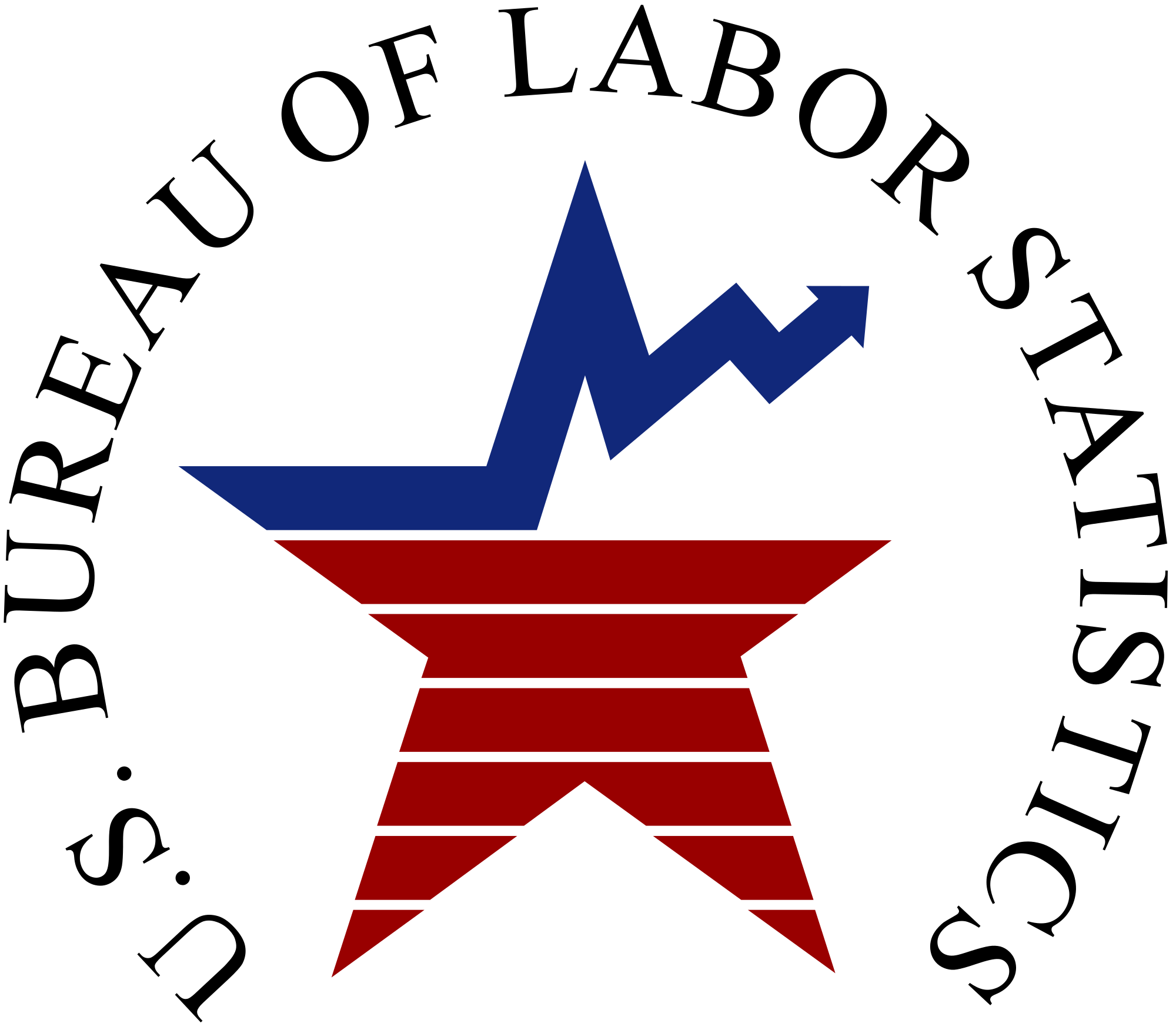
The May job openings rate, at 4.9 percent, increased slightly from 4.8 percent in April. While job openings decreased in accommodation and food services (-147,000) and in private educational services (-34,000), they increased in state and local government (excluding education) (+117,000), durable goods manufacturing (+97,000), and the federal government (+37,000).
Hires, Total Separations & Quits & Layoffs/Discharges Up; Other Separations Down
The number of hires in May was 5,756,000 compared to the adjusted 5,615,000 number for April (+141,000). The rate inched up to 3.6 percent, compared to 3.5 percent in April.
Total separations were 5,422,000 for May, compared to 5,337,000 for April (+85,000). The rate was unchanged at 3.4 percent.
Within separations, quits in May were 3,459,000, up a little from 3,452,000 in April (+7,000). The rate held steady at 2.2 percent.
Layoffs and discharges in May were 1,654,000 up from 1,542,000 in April (+112,000). The rate was unchanged at 1.0 percent.
The number of other separations was 309,000 in May, down from 343,000 in April (-34,000). The percentage rate held steady at 0.2.
BLS posted interactive graphs here.
Three-Month Comparison Chart of Job Openings
Our below table reports the number of available jobs (as taken from the revised JOLTS reports) from the last four months of available data.
| Reports | February 2024 | March 2024 | April 2024 | May 2024 |
|
JOLTS available jobs/ Prior month comparison |
8,813,000 (65,000 > January) |
8,355,000 (458,000 < February) |
7,919,000 (436,000 < March) |
8,140,000 (221,000 > April) |
*January Job Openings were 8,748,000
Note: BLS is scheduled to release the JOLTS Report for June 2024 on Tuesday, July 30, 2024.
Friday, July 5, 2024: U.S. Economy Added 206k Jobs in June, Unemployment Rate Edged Up to 4.1%

In June, employment rose on job gains in government (70k jobs), health care (49k jobs), social assistance (34k jobs), and construction (27k jobs).
The labor force participation rate was 62.6 percent in June, down a smidge from 62.5 percent in May. June’s employment-population ratio held steady at 60.1 percent.
The number of short-term unemployed persons was 6,811,000 in June, up by 162,000 from the 6,649,000 figures in May. The number of long-term unemployed (those jobless for 27 weeks or more) was 1,516,000 (22.2 percent of the total unemployed), which was up by 166,000 from May’s figure of 1,350,000 (20.7 percent of the total unemployed).
By comparison, in June 2023, the unemployment rate was 3.6 percent, the number of short-term unemployed was 5,997,000 and the number of long-term unemployed was 1,117,000 (18.8 percent of the total unemployed).
Major Worker Groups
The BLS/DOL charts below illustrate the numbers by race and ethnicity (data for some groups not seasonally adjusted):
Our table below compares the major worker groups’ numbers from the last three months of available data:
|
The Employment Situation – June 2024 |
||||
| Unemployment Rate |
April 2024 |
May 2024 |
June 2024 |
Feb 2020 Pre-Pandemic |
| National (Seasonally adjusted) |
3.9% | 4.0% | 4.1% | 3.5% |
| White | 3.5% | 3.5% | 3.5% | 3.0% |
| Black | 5.6% | 6.1% | 6.3% | 6.0% |
| Asian | 2.8% | 3.1% | 4.1% | 2.5% |
| Hispanic (Seasonally adjusted) |
4.8% | 5.0% | 4.9% | 4.4% |
| Native Hawaiians & Other Pacific Islanders | 6.5% | 4.0% | 4.9% | 2.7% |
| Two or More Races (Not seasonally adjusted) |
6.4% | 7.0% | 7.7% | 6.1% |
| Men (20+) | 3.6% | 3.8% | 3.8% | 3.2% |
| Women (20+) (Seasonally adjusted) |
3.5% | 3.4% | 3.7% | 3.1% |
| Veteran (Not seasonally adjusted) |
3.1% | 2.1% | 2.8% | 3.7% |
| Individuals with Disabilities (Not seasonally adjusted) |
6.3% | 7.5% | 8.0% | 7.8% |
See Also:
- BLS has additional, interactive graphs available here
- President Biden’s remarks
- Acting Secretary of Labor Julie Su’s statement
- USDOL video short illustrating the report
- White House Counsel of Economic Advisers’ blog
Friday, July 5, 2024: Spring 2024 Regulatory Agenda Revealed EEOC’s Plan to Propose Employer Pay Data Collection in January 2025
OFCCP’s Planned Proposal to Modernize its Regulations Moved Back 8 Months to May 2025

We made extensive changes to our “Upcoming Date Reminders” calendar section (below) in light of the updates posted late on Friday to the semi-annual regulatory agenda. The federal agencies pushed back some of their previous target dates on several rulemakings and added one new item. The new item is symbolic should the Biden-Harris team fail to win re-election. Alternatively, if the Biden-Harris team wins re-election it will be poised to push some of its more controversial proposals through during the usual early-in-term “Honeymoon Period” every newly elected President enjoys.
First Regulatory Agenda Since Loper Bright
Since our story on the Fall 2023 Regulatory Agenda posted last December, we have reported on numerous workplace regulations that the Biden Administration has finalized. Several of these finalized rules have been challenged in litigation, much of which is still ongoing. Now that the U.S. Supreme Court has rescinded its “Chevron Doctrine,” which had required—for 40 years—deference to agency interpretations of laws, those challenging federal regulations are likely to meet with even more success.
In its June 28, 2024, decision in Loper Bright Enterprises v. Raimondo (“Loper Bright”), the High Court held that the Administrative Procedure Act (“APA”) requires courts to exercise their independent judgment when deciding whether an agency has acted within its statutory authority, and courts may not defer to an agency’s interpretation of the law simply because a statute is ambiguous. Thus, courts may exercise their independent judgment to decide whether a federal agency has issued Rules (i.e., “regulations”) within the agency’s statutory delegation of authority from Congress. (Our WIR story discussing that decision is here). Beginning the very day the Supreme Court issued Loper Bright, federal courts immediately began to cite it while ruling on challenges to new federal regulations.
Second Regulatory Agenda Following Biden’s “Modernizing Regulatory Review” EO
Sam Berger, Associate Administrator of the OMB’s Office of Information and Regulatory Affairs (“OIRA”) posted a blog announcing the new regulatory agenda. He noted that this is the second Regulatory Agenda since President Biden’s April 2023 Executive Order (“EO”) 14094 on “Modernizing Regulatory Review,” and OIRA’s subsequent implementing guidance on broadening public participation and community engagement in the regulatory process. In the 2024 Spring Agenda, agencies have expanded their discussions of their public participation efforts, detailing key advancements in public outreach and notable instances of public participation, Administrator Berger pointed out. (See our story here for a detailed discussion of EO 14094.)
A Few Notes Before Diving into the Details
We discuss below the OFCCP and relevant EEOC items and highlight several other upcoming items of interest. For comparison, you can find the previous Fall 2023 Regulatory Agenda from December here and our detailed story on it here. Note: “NPRM” stands for “Notice of Proposed Rulemaking.” We did not include any discussion of items completed since the Fall 2023 Regulatory Agenda because we have previously reported on them in our regular WIR blogs.
The Effect of The Coming Presidential Election: Of course, should the Biden-Harris team fail to win re-election, all regulatory items slated to occur ON OR AFTER January 20, 2025, would be reviewed by the incoming President and many, if not most, would be withdrawn.
OFCCP has two items on the U.S. Department of Labor (“DOL”) Spring 2024 Regulatory Agenda, The agency did not add any new items. One item on the new agenda was pushed back eight months to May 2025, while the target date for the other item did not change from the date listed in the Fall 2023 Agenda.
Target Date for OFCCP’s NPRM to “Modernize” Supply & Service Contractor Regulations moved from September 2024 to May 2025
This is the second substantial delay of this proposed NPRM clearly marking it as a low priority item. The new delay moves back OFCCP’s target publication date another eight months from the Fall 2023 Agenda target date of September 2024.
OFCCP now anticipates that its NPRM to modernize the Affirmative Action Programs, recordkeeping, and other Executive Order 11246 requirements for Federal Supply and Service Contractors and Subcontractors (RIN: 1250-AA13), will be published in the Federal Register in May of 2025. The regulations housing these requirements are at 41 CFR §§60-1, -2, -20 & -300 and 41 CFR §§60-300, -741, & -742. In addition, the proposal “will consider modifications in light of Executive Order 13988, Preventing and Combating Discrimination on the Basis of Gender Identity or Sexual Orientation.”
Final “Technical Amendments” to Update VEVRAA & Section 503 Jurisdictional Thresholds & Remove Gender Assumptive Pronouns Still Slated for September 2024
OFCCP did not push back its target date for its Rule to make technical corrections to update jurisdictional thresholds for the Vietnam Era Veterans’ Readjustment Assistance Act (VEVRAA) and Section 503 of the Rehabilitation Act. As it was with the Fall 2023 Agenda, OFCCP’s target date to publish updated Rules is September 2024 (RIN: 1250-AA16). The Federal Acquisition Regulation Council has previously published updated jurisdictional standards pursuant to section 807 of the Ronald Reagan National Defense Authorization Act, codified at 41 USC §1908, OFCCP explained. The upcoming Rule will also correct OMB control numbers for OFCCP information collection requirements and remove gender-assumptive pronouns. The regulatory citation for this item is 41 CFR §§60-1, 2, 4, 20, 30, 40, 300, 741, & 999.
EEOC Plans to Publish Proposal to Collect Pay Data in January 2025
The EEOC listed a total of six items. We discuss below the three not yet completed items relevant to our readership.
NEW Proposed Amendments to EEOC Regulations to Provide for Pay Data Collection Slated for January 2025
The EEOC plans to propose a rulemaking regarding its “authority to collect pay data or related information as reasonable, necessary, or appropriate for the enforcement of Title VII of the Civil Rights Act of 1964 and the Equal Pay Act of 1963” (RIN: 3046-AB15). The anticipated proposal would amend the EEOC’s regulations at 29 CFR Part 1602. The Commission noted it “would seek public comment on this proposal.” The agency set a January 2025 target date for its NPRM.
In March 2024, we reported that in a FAQ, the EEOC noted steps it had taken toward future pay data collection via an EEO-1 Survey Component 2 Hours Worked and Pay Dating Reporting Requirement. See FAQ #6 in the FAQ section posted here.
Note: Should the Republicans win the White House in the November 5, 2024, Presidential election, the Republican President would likely then kill the proposal. While the next President will not be sworn in until January 20, 2025, if the EEOC has not published its NPRM on pay data collection by that date, the new incoming President could stop it by immediately appointing (as is the President’s prerogative per Title VII of the 1964 Civil Rights Act) what would then likely be the sole Republican on the bi-partisan Commission at that time (Andrea Lucas: term ends July 2025) to Chair the Commission.
The Republican Chair in this imagined scenario could then stop publication of the Pay Data Reporting NPRM (if not yet published) or stop publication of a final Rule by simply refusing to convene Commission meetings, a prerogative of the Chair. Without Commission Meetings, the Commissioners cannot vote to bring new policies into being.
Then it would not be until July 2026 when the Republican President (in this imagined scenario) could control the Commission. The Republican President would first have to fill Republican Commissioner Keith Sonderling’s seat. Commissioner Sonderling’s term will expire at the end of July 2024 (this month) although the Commissioner could extend his stay until December 31, 2024, if he chose to do so and in the absence of a Republican replacement nominated by President Biden. (Spoiler Alert: President Biden will not move to fill Sonderling’s seat either with Commissioner Sonderling (if he were interested in staying; we do not think he is) or with a Republican nominee who would have to then go through the (currently) lengthy wait for Senate approval of his nomination.
Thereafter, upon filling Commissioner Sonderling’s seat with a Republican Commissioner, the new President would have two Republican Commissioners out of 5 on the Commission. So, the new Republican President would have to wait until July 2026 to take control when he could appoint a Republican replacement to (current Chair) Burrow’s (D) seat when she terms out.
HOWEVER, key to timely replacing both Commissioner Sonderling and Chair Burrows with Republican Commissioners would also be Republican control of the U.S. Senate effective next year. That may be the easiest part of the calculus for any inbound Republican Commissioners since most political pundits on both sides of the aisle now predict that Republicans will win the Senate in November. If so, Republicans would take control of the Senate in the first week of January 2025 when the Senate will first convene to commence the 119th Congress (2025-2026).
However, the first order of business would be to elect a new Republican Senate Majority Leader. That could take some time. Mitch McConnell (R-KY), the current Ranking Republican in the Senate (and former Republican Majority Leader for 12 years during the Bush and Trump years), has announced his intention to not run again for the Majority Leader position. Nonetheless, he intends to remain in the U.S. Senate (his health permitting) to finish his current Senate term expiring when the Senate returns from recess in January 2027 to commence the 120th Congress.
So, after all is said and done, the EEOC’s Pay Data Reporting proposal will likely again fail if a Republican is in the White House beginning January 20, 2025.
EEOC’s Goal to Publish Proposal to Amend Regulations on Exemptions to Recordkeeping and Reporting Requirements Moved Back 13 Months
The EEOC intends to amend its regulations regarding certain recordkeeping and reporting requirements under Title VII of the Civil Rights Act of 1964, the Americans with Disabilities Act of 1990, and the Genetic Information Nondiscrimination Act of 2008. Specifically, the Commission plans to revise these Rules to delegate authority to grant or deny hardship exemption applications, to set forth the procedure to apply for exemptions, and to provide a non-exhaustive list of criteria to be considered to evaluate exemption applications. The new Spring 2024 Agenda set a December 2024 target date for this NPRM (RIN: 3046-AB28), which is 13 months behind the Fall 2023 Regulatory Agenda that originally set a November 2023 target date.
Proposal to Amend EEOC Regulations Regarding Electronic Posting of Notice Poster Moved Back 7 months
In October 2024, the EEOC plans to publish an NPRM to amend its regulations regarding the electronic posting of the “Know Your Rights” Poster (see our story on the most recent update to this poster here). Specifically, the Commission intends to amend its regulations at 29 CFR §1601.30 and §1627.10 to clarify the notice posting requirements related to remote, telework, and hybrid workplaces. Under this NPRM, the EEOC will propose to allow and/or require covered entities to post electronically informational notices explaining the protections against employment discrimination and providing contact information for individuals to file a charge of discrimination with the Commission under the laws it enforces (RIN: 3046-AB29). The October 2024 target date is seven months behind the previous March 2024 date set forth in the Fall 2023 Agenda.
September 2024 Publication Target Date Unchanged for US DOL WHD’s Plan to Propose Minimum Wages for Workers with Disabilities
Slated for September 2024, the US DOL Wage and Hour Division (“WHD”) intends to publish an NPRM on “Employment of Workers With Disabilities Under Special Certificates” (RIN: 1235-AA14). Under Section 14(c) of the Fair Labor Standards Act, employers may apply for special certificates from the WHD to pay individuals with disabilities less than the federal minimum wage (which is currently $7.25 per hour.) There is no minimum floor for the hourly wage that an employer may pay an individual with a disability under these certificates. The September 2024 target date in the Spring 2024 Agenda is unchanged from the Fall 2023 Agenda.
We reported last week that the WHD submitted its NPRM to the OMB on June 27, 2024. For more background on the Section 14(c) program, see our previous stories here, here, here, here, and here.
OSHA’s Official Publication of Its Proposal for Regulations on Heat Illness Prevention Slated for August 2024
We reported above in this WIR issue that, on July 2, the U.S. Department of Labor’s Occupational Safety and Health Administration (“OSHA”) announced its long-anticipated Proposed Rule on “Heat Illness Prevention in Outdoor and Indoor Work Settings.” Details about the upcoming NPRM are included in that story.
In its announcement, OSHA has now provided a link to the 19-page prepublication version of the Proposed Rule.
While the Federal Register website does not yet indicate an official publication date for the proposal, the Spring 2024 Regulatory Agenda shows an August 2024 target date for official publication (RIN: 1218-AD39). The Fall 2023 Agenda did not indicate a publication target date.
OSHA’s Publication Target Date for Final Rule on Occupational Exposure to COVID-19 in Healthcare Settings Pushed Back One Year
OSHA published its Interim Final Rule on Occupational Exposure to COVID-19 in Healthcare Settings on June 21, 2021. The agency published corrections to that Interim Final Rule on July 14, 2021. The comment period closed on August 20, 2021, with 873 comments submitted. OSHA submitted this Final Rule to OMB on December 7, 2022.
The agency pushed back its Fall 2023 Agenda target date of December 2023 to publish its Final Rule by one year, meaning that it now anticipates publishing its Final Rule in December 2024 (RIN: 1218-AD36). The White House just does not want to deal with the COVID-19 issue. This issue has scorched every politician who has tried to handle it. Moreover, COVID-19 is now in everyone’s rear-view mirrors, and it is now not worth the political capital to deal with it. The best way out is to drop back 10 yards and kick a long punt until AFTER the November elections. The President has just called that play into his OSHA quarterback.
NLRB’s Election Protection Final Rule Moved Back Six Months to September 2024 Publication
The National Labor Relations Board (“NLRB”) published its NPRM on “Fair Choice and Employee Voice” on November 4, 2022. The proposal would revise the representation election procedures located at 29 CFR §103 with a focus on amendments it issued on April 1, 2020. It would rescind the current Final Rule adopted by the prior Board majority in 2020. The proposed Rule would rescind and replace the 2020 amendments to the Board’s Rules governing blocking charges and the voluntary-recognition bar doctrine and rescind the amendment governing proof of majority support for labor organizations representing employees in the construction industry. Our story here further explains the proposal.
After an extension, the comment period concluded on February 2, 2023, with 110 comments submitted.
The Fall 2023 Agenda set the target date for this Final Rule as March 2024, but the Spring 2024 Agenda has changed the target date to September 2024 (RIN: 3142-AA22). The President just called a delay because the publication of this Rule will help him rally union Members to get out the vote 4-5 weeks later. (Democrats usually expect about 400,000 to 500,000 union members across the country to deliver the “ground game” by walking local precincts, placing campaign signs, and ringing doorbells to get out the vote in the weeks before a Presidential election).
FAR Council Moved Back One Year Its Target Date for Final Rule to Ban TikTok on Federal Government Contractor Devices
Last year, we reported on the FAR Council’s Interim Rule banning TikTok on federal government contractor devices. In the new Spring 2024 Agenda, the FAR Council set May 2025 as the target date for its Final Rule to Prohibit TikTok [or any successor application or service developed or provided by ByteDance Limited] on Federal Government Contractor Devices (RIN: 9000-AO58). This new target date is one year behind the FAR Council’s Fall 2023 Agenda target date of May 2024. The President just dropped back 10 yards and kicked a L-O-N-G punt until well after the election. The TikTok issue has young voters ticked, a voting block Democrats have taken for granted. However, Democrats are alarmed Biden is suddenly losing this demographic to Trump.
In Brief
Tuesday, July 2, 2024: OFCCP Encouraged S&S Contractors That Missed AAP Certification Portal “Deadline” to Certify ASAP

OFCCP opened the portal as scheduled on April 1st (see our story here). In Tuesday’s email, the agency maintained that it had not extended the deadline, but “[c]ontractors that have not yet registered and certified compliance with their AAP obligations should do so as soon as possible.” In addition, the email stated, “[OFCCP] will consider a contractor’s registration and/or certification timely if the contractor has a pending request for assistance as of July 1, 2024.”
OFCCP sent a similar email message to stakeholders following last year’s June 30, 2023, certification deadline (see our story here.)
We have repeatedly explained that while OFCCP has Office of Management and Budget approval for the Contractor Portal information collection under the Paperwork Reduction Act, OFCCP more likely than not does not have regulatory authority under the Administrative Procedure Act for the Contractor Portal. Our most recent story on this point is here.
Tuesday, July 2, 2024: Citing Loper Bright, SCOTUS Sent Case Disputing Scope of NLRB General Counsel’s Power Back to Fifth Circuit Court of Appeals
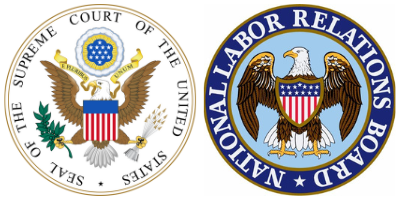
Wednesday, July 3, 2024: Federal Judge in Texas Issued Preliminary Injunction Banning Enforcement of FTC’s Non-Compete Ban as to Specified Plaintiffs
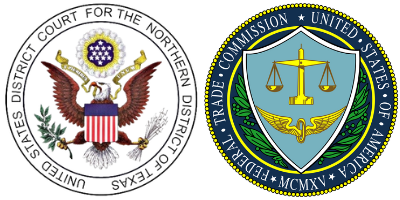
Specifically, Judge Brown, a Trump appointee, found that the FTC lacks substantive rulemaking authority with respect to unfair methods of competition under Section 6(g) of the FTC Act [15 U.S. Code §46]. Although she cited the U.S. Supreme Court’s recent decision in Loper Bright Enterprises v. Raimondo to explain that courts must consider legislative intent in construing a statute, she did not discuss that case at length.
However, she denied the plaintiffs’ (tax preparation company Ryan LLC, the U.S. Chamber of Commerce, and three others) request to block the Rule nationwide, saying it was not clear based on the record in the case so far whether such an order was appropriate. She stated she would issue a final ruling by August 30, 2024.
Friday, July 5, 2024: EEOC Published Final Rule to Tidy Up Removal of ADA Wellness Rule That Court Vacated in 2017

In the Notice, the EEOC explained that on August 22, 2017, the federal district for the District of Columbia concluded that the Commission did not provide sufficient reasoning to justify the incentive limit adopted in the EEOC’s May 17, 2016, Final ADA Rule and remanded that Rule to the EEOC for reconsideration without vacating it. However, on December 20, 2017, the court issued an order vacating the incentive section of the 2016 Rule. Consistent with that decision, on December 20, 2018, the EEOC published a Final Rule entitled “Removal of Final ADA Wellness Rule Vacated by Court” to remove the incentive section of the 2016 ADA Rule. However, due to an oversight, this 2018 Final Rule did not remove the corresponding discussion of that section in the appendix to 29 CFR part 1630. Friday’s Final Rule serves to supplement the 2018 Final Rule and implement the court’s ruling by removing the corresponding portions of the appendix to 29 CFR part 1630.
Note that, although the federal court’s December 20, 2017, order (on page 9) “strongly encouraged” the EEOC to issue a new Rule to replace the vacated portion “well before” 2021, the EEOC has yet to do so. On January 7, 2021, the EEOC announced a Notice of Proposed Rulemaking (“NPRM”) to replace the vacated portion of the 2016 Rule (see our story here.) However, the EEOC withdrew the pending NPRM – and thus, did not publish it in the Federal Register – pursuant to a January 20, 2021, regulatory freeze at the beginning of the Biden administration. To date, the EEOC has not issued any further guidance on this topic.
Looking Ahead:
Upcoming Date Reminders
We added eight NEW items to our calendar this week:
March 11, 2024: Previous effective date of NLRB’s Final Rule on Standard for Determining Joint-Employer Status under the NLRA (per U.S. District Judge’s order; original February 26, 2024, effective date extended); On March 8, 2024, a U.S. District Judge vacated this Final Rule and on May 7, 2024, the NLRB filed a Notice of Appeal – stay tuned for further developments
July 9, 2024: “Failure to File” deadline for EEO-1 Survey Component 1 Data Collection (collection period opened on April 30, 2024, and previous deadline was June 4, 2024)
July 17, 2024: Deadline for comments on OFCCP’s Proposed Changes to its Construction Compliance Review Scheduling Letter, Itemized Listing, and Construction Contract Award Notification Requirement Form (see here for details on the proposed changes)
NEW July 18, 2024 (2:00 pm – 3:30 pm ET): DE Masterclass Employment Law Roundtable | How To Properly Prepare For and Defend an OFCCP Audit
July 23, 2024: Comments due on the FAR Council’s proposal to reinstate a requirement for federal contractors to report executive compensation and first-tier subcontract awards
August 20, 2024: Comments due on US DOL VETS’ Request for Information on “Black Veterans and Good Jobs”
August 29, 2024 (11:00 – 5:30 EST): US DOL WHD online seminar on prevailing wage requirements for federally-funded construction projects; register here
September 4, 2024: Scheduled effective date for Federal Trade Commission Final Rule banning most non-compete agreements
NEW September 2024: U.S. NLRB’s target date for its Final Election Protection Rule (RIN: 3142-AA22)
September 2024: OFCCP’s current target date for its Final Rule on “Technical Amendments” to Update Jurisdictional Thresholds & Remove Gender Assumptive Pronouns (RIN: 1250-AA16)
September 2024: U.S. DOL WHD’s target date to publish an NPRM on “Employment of Workers With Disabilities Under Special Certificates” (Subminimum Wage Rule) (RIN: 1235-AA14)
NEW October 2024: EEOC’s target date for proposal to amend its regulations regarding the electronic posting of the “Know Your Rights” Poster (RIN: 3046-AB29)
November 5, 2024: Federal Congressional and Presidential Election
NEW December 2024: EEOC’s target date to publish its NPRM to amend its regulations on exemptions to certain recordkeeping and reporting requirements (RIN: 3046-AB28)
NEW December 2024: U.S. OSHA’s current target date to publish its Final Rule on Occupational Exposure to COVID-19 in Healthcare Settings (RIN: 1218-AD36)
January 1, 2025: Second effective date for US DOL WHD’s Final Rule on Defining and Delimiting the Exemptions for Executive, Administrative, Professional, Outside Sales, and Computer Employees (Overtime Rule); the standard salary level necessary for exemption – i.e., eligible for overtime pay – will increase from $43,888/year to $58,656/year and the highly compensated employee threshold will increase from $132,964/year to $151,164/year
NEW January 2025: EEOC’s target date to publish its NPRM to amend its regulations at 29 CFR Part 1602 to provide for a pay data collection (RIN: 3046-AB15))
May 21 – May 23, 2025: DEAMcon25 in Scottsdale, Arizona
NEW May 2025: OFCCP’s current target date for its Notice of Proposed Rulemaking to “Modernize” Supply & Service Contractor Regulations (RIN: 1250-AA13)
NEW May 2025: FAR Council’s current target date for its Final Rule to Prohibit TikTok [or any successor application or service developed or provided by ByteDance Limited] on Federal Government Contractor Devices (RIN: 9000-AO58); the Interim Rule is here
THIS COLUMN IS MEANT TO ASSIST IN A GENERAL UNDERSTANDING OF THE CURRENT LAW AND PRACTICE RELATING TO OFCCP. IT IS NOT TO BE REGARDED AS LEGAL ADVICE. COMPANIES OR INDIVIDUALS WITH PARTICULAR QUESTIONS SHOULD SEEK ADVICE OF COUNSEL.
SUBSCRIBE.
Subscribe to receive alerts, news and updates on all things related to OFCCP compliance as it applies to federal contractors.
OFCCP Compliance Text Alerts
Get OFCCP compliance alerts on your cell phone. Text the word compliance to 18668693326 and confirm your subscription. Provider message and data rates may apply.

